Recommendations for the manufacture of phytosten at home without huge costs.
Content
- Do -it -yourself phytostle in the interior of the apartment, at home: ideas, photo
- How to make a design for phytosten, phytomodule in an apartment, house: scheme
- What plants, moss are suitable for phytosten in an apartment, house: List
- Phytosten from moss with your own hands for an apartment, at home: how to make a photo
- Phytosten from indoor plants in the apartment: photo
- How to properly care for herbalist in an apartment, house?
- Video: Phytostins | Vertical landscaping | Phytomoduli
Phytosten - This is the original method of finishing the walls of the apartment, in which the so -called vertical landscaping is used. This method of modification of living space is good because it is good for both apartments and houses.
And although until recently it was believed that a vertical garden in a living room can only be done by a professional, at the moment, even a novice flower breeder can easily cope with this task. The main thing is to be able to correctly make a module for plants, as well as choose the right flowers. We will talk about how to make a phytosten for your home or apartment in our article.
Do -it -yourself phytostle in the interior of the apartment, at home: ideas, photo

As you probably already understood, phytosten can become a real decoration of your home, unless, of course, make it and place it correctly. So, for example, if you live in a very small apartment, then it is best for you to make a vertical garden not very cumbersome. If he completely occupies the entire wall, then it will look alien. But in a large house you can completely give free rein to the fantasy and make the most bulky and large phytosten.
You can place it in the kitchen, in the hallway, in the living room or even in the bathroom. True, when creating such a finish, it is necessary to consider for what purposes the vertical garden will be used. If you want to zone the space with it, then make a portable module, which, if necessary, can be easily moved to the side or simply transferred to another place.
If you need phytosten to clean the air in the room and will constantly be in the same place, then make a stationary phytomodule, which will be connected to the sewer and connected to a special watering system. Yes, it will be a little more difficult to make it, but in the end it will be much easier for you to care for the plants that will be planted in it.
Home Ideas:

- Phytosten in the form of a picture. This type of landscaping of living space is ideal for small halls, bedrooms and living rooms. As a rule, in this case, the phytomodul is placed in the most prominent place and so that it looks as beautiful as possible both in day and artificial light.
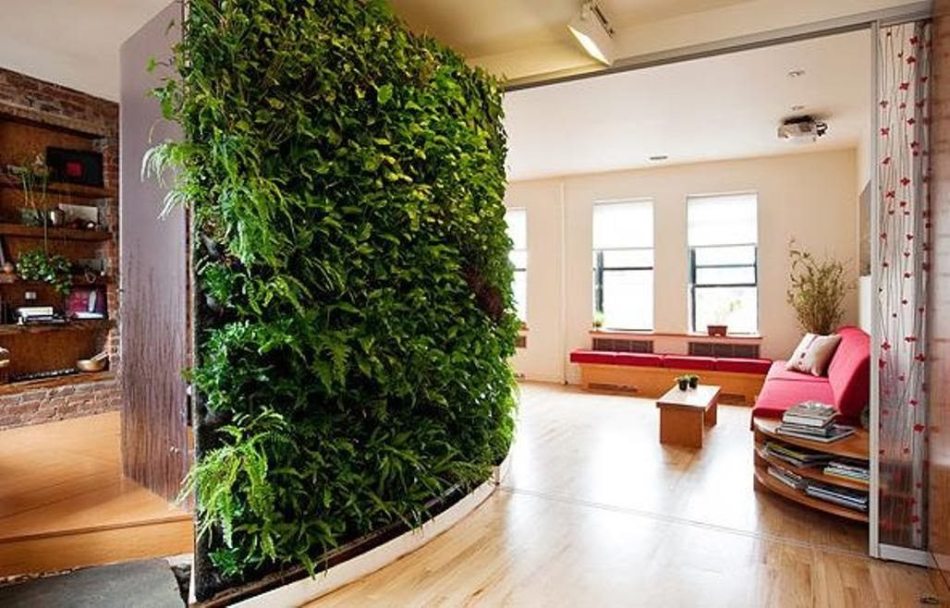
- Phytosten for zoning space. A similar type of vertical gardens is ideal for creating cozy zones in which you can hide from prying eyes. Using the green wall, you can make a hidden area for lunch in the living room or an intimate corner in the bedroom. True, in this case, you must remember about the dimensions of the room. The smaller the room in which the phytosten will be installed, the more it should be airy.

- Phytosten for large -scale landscaping. In this case, you can afford to place plants on one or even two walls of the same room. But know that in the end, phytosten fit well into the overall design of the room, the interior in it should be as concise as possible. And this means that the remaining walls and ceiling should be finished quite calmly. If they also draw attention to themselves, then the living room is unlikely to turn out cozy.
How to make a design for phytosten, phytomodule in an apartment, house: scheme

I immediately want to say that the manufacture of a phytomodule at home is a rather time -consuming process. But still, if you spend money on high -quality materials and show a little patience, then in the end you can enjoy the man -made garden in your own home for a very long time. Now let's figure out what you need for work.
So:
- Make sure that you have a material from which you can subsequently make a strong frame. For these purposes, wooden boards or rails, plastic pipes or aluminum corners are ideal. In principle, all of the above materials are durable and are ideal for creating a frame. But nevertheless, for example, the aluminum profile is best not to use for the manufacture of large -sized phytomodule so as it can bend slightly from a strong load.
- Separately, I want to say about the moisture resistant canvas, which will clean the walls of the dwelling from the effects of moisture. Of course, if you want to save, you can quite calmly use ordinary polyethylene. But as practice shows due to the fact that it interferes with normal air circulation, after some time mold still appears on the walls. In view of this, it will be better if you spend a little more and buy polycarbonate or PVC canvas.
- In order to make the right cell for planting plants, you will need a material that is poorly served processes of decay and special soil. Therefore, be sure to buy a high -quality felt, as well as hydroponics with a small addition of expanded clay.


Recommendations for the manufacture of phytosten:
- First of all, decide what size phytomodul you want to do. If you do not want to end up in the end, then you can draw the shape of a vertical garden on the wall, and then measure the exact dimensions. Having received data, start making a frame made of wood, plastic or aluminum. Please note that this should not be an easy square or rectangle. It must be reinforced with vertical and horizontal transverse. Treat the finished frame with water -repellent agents and begin to make pockets for planting plants.
- Take felt fabric and form the right number of pockets from it. To begin with, measure a piece of size, which will exactly correspond to the size of the frame. Next, take a piece 3 times more and attach it to a pre -cut off, and fold it so that you get the same size of the fold. Fix everything with pins and stitch them in such a way that you get the same pocket in size.
- Pull the frame with a waterproof material (film or PVC with a canvas) and secure felt pockets on this design. If the frame is wooden, you can use small nails. If you used an aluminum profile for its manufacture, then you will need small screws.
- At the final stage, fix the phytomodule on the wall using larger screws and you can start connecting the irrigation system. If the phytosten is placed in a room in which daylight will practically not fall, then you will definitely need to place artificial light sources near it, which can easily be turned in the right direction. After all this is done, the pockets can be filled with special soil and plant plants.
What plants, moss are suitable for phytosten in an apartment, house: List

In principle, as practice has shown, almost all indoor plants can be used to create phytosten, though taking into account some nuances. If you want your man -made garden to please you and your guests for a very long time, then plant the most unpretentious plants in it that can grow with a minimal amount of light and moisture. Also consider that on one phytomodul it is best to use either flowering plants or just green.
Since flowering plants should be careful more carefully, as a result, they may simply not have enough moisture, nutrients or lighting, and they will simply refuse to grow. If you decide to decorate the green mass with flowers, for example, orchids, then make sure that they have a separate watering and lighting system that would help create conditions perfectly suitable for their growth.
List of plants suitable for phytosten:

- Plants of the family of the Marantovovs. As a rule, these are not very high bushy plants that loving moderate humidity and calmly grow in slightly darkened rooms.

- Plants of the family of hypoxydia. These indoor plants are somewhat similar to the previous look. Their only difference is longer leaves and slightly large height. Therefore, it is undesirable to plant them in the center of phytosten.

- Family of ferns. This group can include Pellya, Nephrolecup and Pheris. As a rule, these plants give a very magnificent and bright green top, which at the same time looks very light, mobile and airy. The main advantage of ferns is their ability to grow near heating sources.

- Family Bromlevy. Although these plants belong to the type of flowering, they can still be combined with green plants. Due to the fact that you can not water them in a very standard way, you can take care of them as well as everyone else. If you see that it has not yet come to moisturize the entire phytomodule, but at the same time this species of plants began to fade, you can simply spray their flowers from the spray gun. This will be enough for them to look perfect again.

- All varieties of ivy. The ivy is more than the rest of the plants for creating phytomodules. It is unpretentious in care and easily transfers a lack of moisture, light and air. Therefore, if desired, you can use it for zoning or decorating a kitchen, bathroom, toilet or internal corridors. A wide variety of colors and shapes of this plant will help you make the man -made garden as original and beautiful as possible.
Phytosten from moss with your own hands for an apartment, at home: how to make a photo

As you already, probably, understood if you wish to make a phytosten for your home, absolutely every person. The main thing in this matter is the right choice of plants and, of course, a reliable frame. If you want to decorate your living space with a phytomodule that will not require large financial costs and time, then use moss for this. You can buy it already ready, packaged in bags or just go to the forest and pick it up there.
If you give preference to the last option, then remember that it will need to be carefully prepared before fixed on a special frame. Moss will need to be cleaned of dry leaves, coniferous needles and forest residues. In addition, the plant mass will need to be slightly dried. If its root system is even slightly wet, you simply cannot fix it on the frame. Also remember that such a phytomodule really does not like ultraviolet.
Therefore, if you mark it in such a way that direct sunlight falls on it all the time, then it will dry and fade very soon, and this will happen even in the case of very intense watering. In addition, keep in mind that the finished phytomodule will be quite heavy. Therefore, it will be better if you produce several small modules for mounting large phytostsa, and then put one large one from them directly on the wall. For the manufacture of such decor objects, you can use spherical, tropical, pillow, flat, mountainous, tull and silver moss.

Production recommendations:
- So, for starters, buy a thick sheet of plywood of a rectangular or square shape. Process it a couple of times with an organic composition that will prevent decay. After processing, let the base dry well.
- Next, prepare the moss as we told you a little higher. If possible, try not to cut it with a knife into the necessary pieces. If you need to get a small piece of moss, then carefully separate it with your hands from the total mass.
- Next, we take ordinary PVA glue and point it on a plywood sheet. On top of the adhesive base we apply moss. Note that the glue should be worn pointarily. If you completely smear the plywood sheet with glue, then in the end absolutely all the roots of the moss will die, and it will not be able to receive moisture, which in turn will lead to its complete drying.
- After the entire moss is glued, the phytomodule will have to be left alone for a whole day. During this time, the glue will dry well and will not let the MHU fall off after you fix everything on the wall. You can fix such a module on the wall with both nails and screws.
- After this is done, pick up at room temperature water and thoroughly spray the moss with it. In order for it to remain green as long as possible, repeat this procedure 3-5 weeks.
Phytosten from indoor plants in the apartment: photo

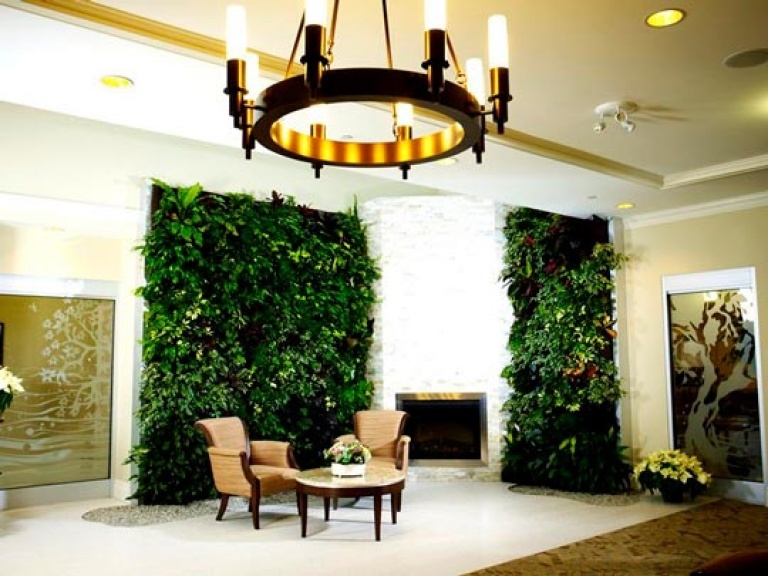
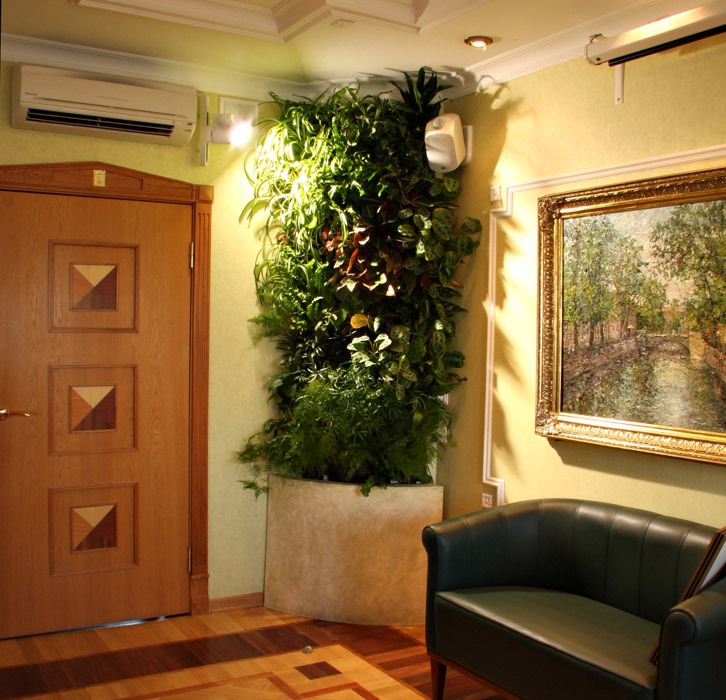


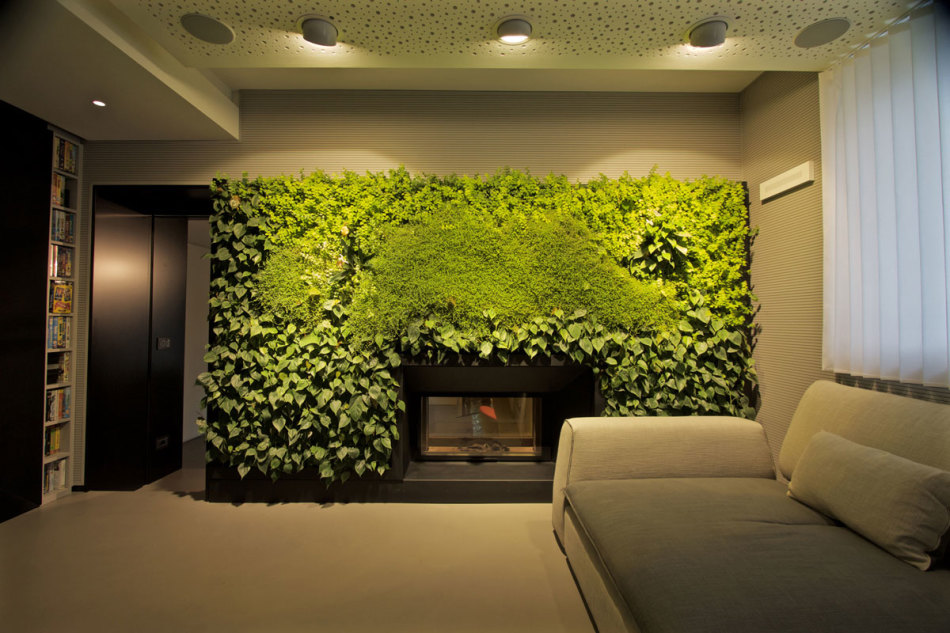
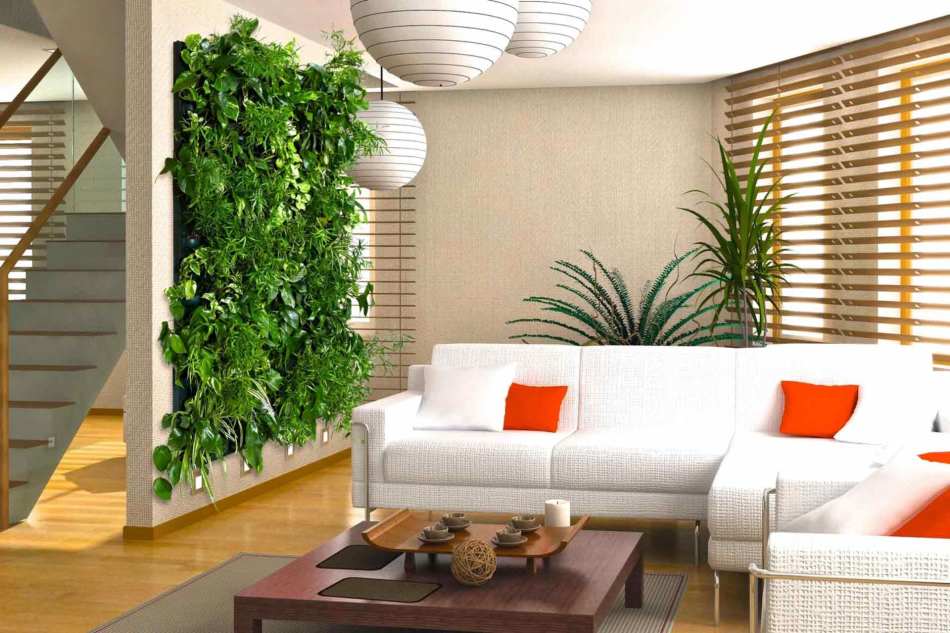
So that you can get a more complete picture of what a phytosten in the interior of an apartment, home or cottage can be, we bring to your attention several original ideas to create such a decor.
How to properly care for herbalist in an apartment, house?

- Since phytosten is made exclusively from living plants, it requires special care. Firstly, you must make sure that there is always enough light in the room. If you see that most of the plant’s day is as if in the shade, then eliminate this problem with the help of artificial light sources.
- Secondly, remember that plants are very important to plants. If there will be a lot of moisture or, conversely, very little, then this will immediately affect the visual state of the phytosten. Therefore, if possible, try to maintain about the same humidity in a room with a similar decor. If it is too high, ventilate the room, if its indicators dropped sharply, raise them with a simple spraying of the space from the spray gun.
- Well, and, of course, remember regular watering. At the initial stage, adjust the watering system so that it waters the plants 2 times a day for 20 minutes. After 3-4 days, see if they have enough moisture. If everything is fine, leave everything as it is and calmly observe how the man -made garden is modified.
- As for the planting of plants, it can also be carried out through the watering system. All that you will need to do for this, just add fertilizer to the water, and together with life -giving moisture will come to the root system.
- Another important stage of care is the formation of the form of phytomodule. In order for the plants to grow not in height, but in width periodically carry out pinching of the kidneys and shoots.







